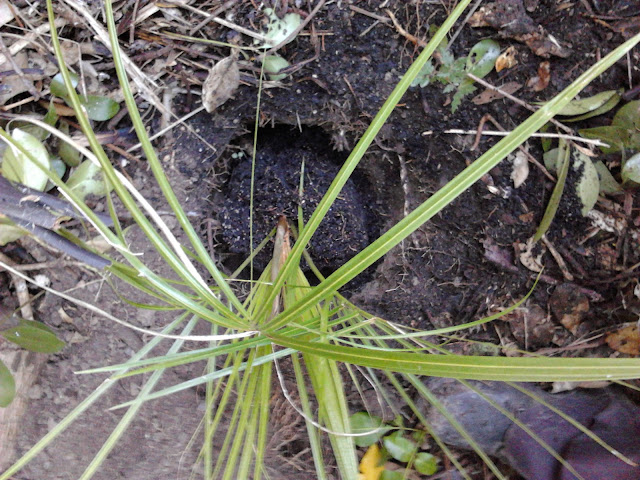 |
| The site has already been cleared of weeds and other desirable plants have been transplanted elsewhere. One corner of the site needs to retain its current theme and planting to tie in with the Rainshadow theme of the rest of the garden area, so we marked off the area with large rocks around the border. |
 |
| The ground, having previously design in the riverbed style, was full of stones, so I collected as many as possible in a bucket to make the soil easier to work with and level out. |
 |
| The completed large stone border. Each stone is buried to half its depth so that it is anchored in the ground and won't move around. |
 |
| We then leveled and raked the site to remove the worst of the humps from the previous landscaping style. The soil needed to compacted after raking so we walk/shuffled over it to pack it down. |
 |
| Completed border. Coprosma rigida will be planted the other side of the border to form the outside wall of the maze. |
 |
| Entrance way to the maze with a step up and flat stone at the mouth. The Pittosporum obcordatum has been clipped to form an archway over the entrance and another P. obcordatum will the planted in the adjacent bed to finish the archway. |
 |
| 6 Coprosma rigidas were planted along the border edge next to the pathway to provide the outer wall of the maze, they were place approx 70cm apart and are expected to grow up 1m in height. These will be clipped on the outward and inside faces into a straight edge. Here the new plantings are being watered in. |
 |
| After watering, I gave all the new plants a drink of Thrive fertilizer. This is a soluble power fertilizer to be mixed with water - 1 spoon measure per 4.5 litres of water. This mixture fed 14 plants. |
When the site was fully prepared before we put in any plants I measured up the area to plot onto a plan. This will help us be able to design the maze and give us a good idea of how many plants are going to be needed, and where to put them.



































